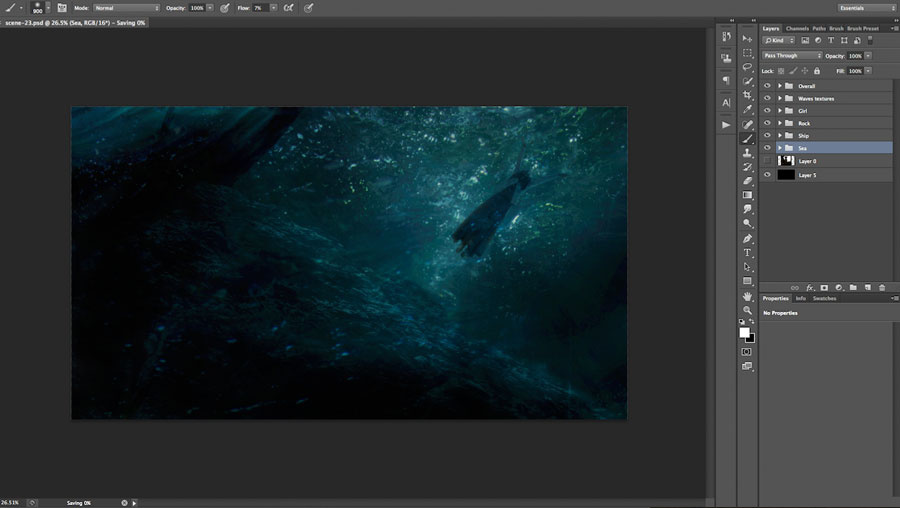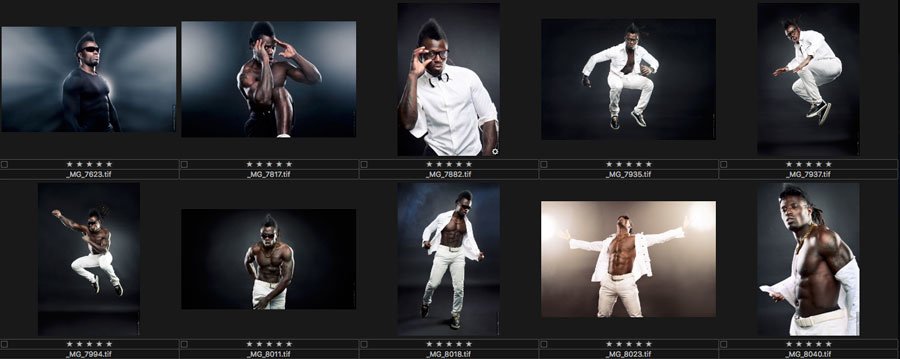Pricing has always been a subject of interest for photographers. Whether you practice high-end commercial photography or you take beautiful family portraits, understanding and determining a just pricing strategy for you and the client is very important.
When I started I didn't have an idea how to put a price on my work. I began as a family and children photographer. A few years later I started to do more commercial portraiture. Nowadays I still photograph families occasionally. My current pricing strategy works both for families and commercial projects.
The price on a project depends on the amount of work you put into it. The best way to estimate how much you should charge is to separate the project into smaller parts that are easier to be estimated. Below are the basic parts of every photoshoot.
Preparation
This could be a simple task such as grabbing your camera and going to a local park for a photoshoot. However, it may be quite complex such as location scouting, getting permits, hiring a team, renting gear, building sets, signing contracts, researching your subjects, coming up with ideas, or booking hotels and flights. This is all work and it has to be paid accordingly. For a simple preparation you may charge extra for your bus ticket, while for a complex one it's way more expensive.

Execution
It depends on the style of shooting and what the project calls for. The price is not always based on the amount gear you use on set. You could be a very skillful photographer that can do the job with just a reflector and still charge a lot of money because of your brilliant understanding of composition and light. The execution may last from a few seconds to a few weeks. The price has to be set according to your skills and the amount of work involved in the that stage of the project.
Charging by the hour or by the day is something I've incorporated in my work. Even if the shoot may last for less than a minute, I charge for one hour minimum as it's not just the time with the model. It may include setting up lights and then packing the gear back.

Postproduction
This is the part where all or a selected list of the files are being processed. It depends on your policy if you give away all the digital files to the client or just a limited set that is defined by you or by them. The images may be retouched or given as digital negatives to the client. The processing itself could be from adjusting the overall look of the image (color balance, contrast, exposure, sharpness, etc.), to detailed retouching and creating complex composites. It is clear that if you give all images you are most probably not retouching them in detail. In some cases you might retouch only some of them. But if delivering just a limited set of files, they are most probably retouched thoroughly.
The efforts for retouching an image may vary a lot. I've had complex composites that took me between four days and a week while a detailed retouch of a portrait may vary from minutes to hours. When putting price on the postproduction take into account what type of processing will be involved so it is charged for accordingly.

Distribution and Image Rights
I call it a distribution because files to me look like physical products. If you are a woodworker who makes chairs it doesn't matter if you sell an ordinary dining chair to the president or to a common citizen. Both clients will use them only in their kitchen or dining room. However, if the president needs the same chair (because it's so comfortable) in the official dining rooms in all major cities of the state, this means the chair, as a product, will be used in more locations not just in a single dining room. The chair will be sold as multiple copies and will be distributed and delivered at multiple destinations. The more locations need that type of chair, the more expensive the chair production for that client would be.
It's the same with the file. It can be a portrait of a CEO published only on the official company website. It may receive relatively the same number of views as a family portrait shared on a Facebook page, if not less. But if the image of the CEO is about to be published on all broadcast media channels, this makes it distributed on multiple locations just like the chair. This makes the image more valuable and that's why it should cost more.
As digital files can be copied uncontrollably multiple times, the distribution is limited by defining image rights for the files through contracts. Most of the time photographers sell images with exclusive rights even if they don't know the exact term. The simple meaning of that is the files are not sold to third parties neither by you nor by the client unless an additional contract is signed regulating other rights. On the other hand selling files with non-exclusive rights means the image can be sold by you to other clients as well. Selling an image with non-exclusive rights is like selling one chair at a time to different clients. Selling images with exclusive rights for distributing and displaying them in multiple locations is the same as delivering multiple chairs to a single client at once. The price for a non-exclusive rights image is usually low as it allows you to sell it multiple times. The price of an exclusive rights image is usually high, especially if it's sold to a client that would distribute and display it in places visible by a multitude of people. The more viewers the image is shown to, the more expensive it is.

Although in the beginning of my career I wasn't fully aware of these basic parts above, I started with the most common pricing strategies shown below that I found others used and seemed quite safe.
Pre-defined Packages
In the beginning I started shooting family and children portraits. I had packages for one, two, three, and four hour sessions. As a result I gave all digital files on a DVD together with several prints depending on the package. Placing limits felt safe that I guaranteed myself I would be paid for my efforts. Giving all images on a DVD means I would deal with an unknown number of files. I was not retouching them in detail but just applied basic overall processing: white balance, exposure, contrast, and sharpening. I retouched only images that screamed for retouching, for example removing an object in the frame that ruins the portrait. I could not afford retouching the images in detail for the price of my packages and in fact I was giving all of the images which varied by number.

As time passed by I had to start retouching the portraits in detail as it looked more professional. The clients felt flattered when they've had some imperfections diminished or completely removed. That, of course, increased the amount of work, so I increased the prices of my packages. Everything else remained the same.
After having several clients, and retouching several hundred images, I found the clients were publishing just a few of them. All the rest haven't seemed to see the light of day. Most of my retouching work was in vain. I found that detailed post-processing is something I needed in my final results but it had to be limited to the images the client would actually use. This led to the next stage of my pricing strategy.
Custom Packages
Charging by the File Being Post-Processed
Working only on a selected set of images is great because it is exactly what the client would publish. I ask the clients to go through the images and select the ones they'd like to purchase.

I separate my post-processing pricing depending on the complexity of the work. In general I charge for retouching that doesn't require compositing and for processing that calls for blending several images into one.
Charging for Execution
I understood that the time I put into photographing the project has to be included as a separate fee. This way even if the client chooses two images from a four hour photoshoot, I will still have my time and efforts covered.
Charging for Distribution
There came the moment when I had my first commercial client who wanted images that were going to be used for advertisements. I knew these images would have much more publicity than the images from a casual family photoshoot. I calculated a price that combined the fees I have estimated for execution, postproduction, and distribution, aka usage rights. At first the client said it was too expensive and asked me if I'd do it for free guaranteeing me lots of exposure. I answered that my accountant doesn't accept exposure as payment and we'd better agree on a lower price level than do it for free. They agreed. I diminished the overall price by lowering the price of some of the components. When the price goes down I lower the value or the work required for that part. It's not the quality that's being changed but the value or amount of work. In this case I diminished the execution duration and also limited the usage rights to only publishing the images in print ads. They agreed and I photographed the project.
Charging for Preproduction
By that time I hadn't had a client that required much preparation so I never charged anything else than for execution, postproduction, and usage rights. There came this client that wanted me to do a three day photoshoot. It required a lot of planning with scouting locations, arranging permits, and photographing backgrounds for composites.. I charged the client for that part of the project and I'm glad I did. They never called back as their business went into a different direction, however I had my efforts covered.
In Conclusion
Estimating the photography projects as a combination of four separate parts works for all types of clients I have. When photographing families I keep the image rights fee to a minimum. That's the main difference between commercial and non-commercial clients. This helps me maintain the same pricing policy for both parties. It guarantees my efforts are rewarded in all phases of the project. It keeps me focused only on the images the client wants allowing me to dive deep in detail, knowing my work won't be in vain.
I hope those insights of my pricing journey were helpful to you. Do you think there are cases this strategy won't work at all?







That's too much like work. I like working for a salary so everything is time and expenses. Luckily, I also have complete creative freedom.
Running a business is way more work than working for a salary. But there's way more freedom as well.
I know. But I also know myself well enough that I can't handle the responsibility. Give too much freedom, I would starve to death! ;-)
Then this was a great article for you to read Patrick. It showed you that you need to be a hobbyist and do photography as a hobby. Professional photographers and business owners in general, don't have that mindset or that luxury. To us, it is about business and how can we leverage the opportunity to sell our work for the most money possible. Just as someone in the business of selling chairs, phones, computers or anything else you use daily does.
If you say so.
It depends on your life goals are. For example if you want to be with your family more than just the weekends and the evenings (in case of a 9-5 day job), being a business owner is the way to go.
I'm not trying to be argumentative here but most business owners I know spend far less time with their families than most employees do.
In my case, I pretty much make my own hours but I know that's not the norm.
Yes, it's very subjective.
Good article, Tihomir. Now let's create a simple app that let's you swipe through each part, inputting the numbers and outputting an invoice at the end. I reckon 5.99 for the app and we can split profits 50/50?
I wish it was that easy to simply fill in numbers. The best application is called "a human assistant" who can help with the emails and phone calls with the clients that clarify the items needed to be included in the final price as well as the image rights.
Another difficult to "fill in" thing is how long a shoot would take vs. how much time the client will be available. They think you can photograph on a seamless backdrop 10 inexperienced-in-front-of-a-camera board directors for 3 minutes in a conference room available for just 10 minutes between important meetings of theirs.
Bookmarked this article! I've always struggled with how to price things out. Thank you!
Hey, thanks! I appreciate that and I'm glad it helped
Saved. This can keep a business owner organized next time they are freaking out lol.
Thank you!
Haha. Thanks!